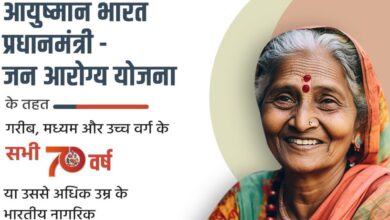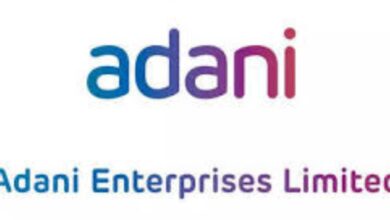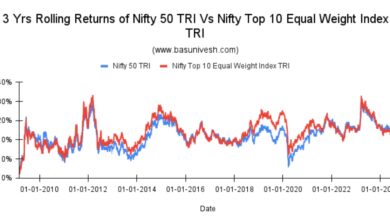NPS Vatsalya Scheme – Don’t Invest BLINDLY!!

The Finance Minister has launched the NPS Vatsalya Scheme to secure retirement savings for minor children. Let us look into the advantages and disadvantages.
Following the announcement made during Budget 2024, I wrote an article on the subject (Budget 2024 – NPS Vatsalya Scheme – Should you invest?“. However, at that time, the specifics of the scheme were not accessible. Therefore, I thought it necessary to revisit the topic and provide an updated discussion.
NPS Vatsalya Scheme – Eligibility, Features and Benefits
Let us now look into NPS Vatslya Scheme eligibility, features and benefits in detail.

- Any Indian citizen below 18 years old is eligible for this scheme. Non-resident Indian (NRI) and Overseas Citizenship of India (OCI) individuals below 18 years are also eligible for this scheme. Parents or guardians of a child can open the account on behalf of the minors.
- The account shall be operated by the guardian for the exclusive benefit of the minor until the attainment of the age of majority (18 years).
- A unique Pension Retirement Account Number (PRAN) in the name of the minor subscriber shall be issued by the concerned CRA.
- Upon attainment of 18 years of age, the account of the subscriber shall continue to be operational and will be seamlessly shifted into the NPS-Tier 1 Account- All Citizen Model.
- Upon attainment of 18 years of age, a fresh KYC of the subscriber be carried out within 3 months from the attainment of majority as specified by PFRDA from time to time. The contribution shall be allowed into the NPS Tier-1 Account, post submission of fresh KYC.
- On shifting into the NPS-Tier I account upon attaining majority, the features and, benefits including exit norms under the NPS-Tier-I -All Citizen Model shall be applicable.
- Contributions under the scheme can be made by the guardian or the subscriber through various modes of contribution as specified by PFRDA from time to time. The minimum contribution is Rs.1000 per annum and there shall be no limit on maximum contribution. The initial contribution for enrollment under the scheme is Rs.1000.
- The charges and fees to be levied on the account at any time shall be the same as the charges under NPS- All Citizen Model as stipulated by PFRDA from time to time.
- The Investment of the contribution made into the account which includes a selection of pension fund shall be the same as the choices available under the NPS- All Citizen Model as stipulated by PFRDA from time to time.
- For the purpose of education of the subscriber (MINOR), treatment of specified illnesses, disability more than 75%, or the reasons as may be specified by PFRDA in the interest of the minor subscriber under the regulations, the guardian shall be allowed to partially withdraw up to 25% of subscribers’ contribution excluding returns thereon after minimum 3 years from the date of opening of account, for maximum three times till the subscriber attains 18 years of age. Such facility shall be made available on a declaration basis.
- In the case of the death of the minor subscriber, the entire accumulated pension wealth to be paid to the guardian.
- In case of the death of the guardian registered under the account, another guardian is to be registered on behalf of the minor subscriber by submitting the KYC documents as specified by the PFRDA from time to time.
- In case of the death of both the parents, the legally appointed guardian may continue the account with or without making contributions to the account, and upon attainment of 18 years of age by the subscriber, the subscriber shall have the option to continue or exit from the scheme.
- The subscriber shall be allowed to exit only upon attainment of age of 18 years. On such exit, at least eighty percent of accumulated pension wealth available in the account shall be utilized for the purchase of annuity and the remaining balance shall be paid in lump sum. In case, the accumulated pension wealth available in the account is equal to or less than two lakh fifty thousand, or the purchase of annuity is not available from empaneled Annuity Service Providers (‘ASPs’), the subscriber shall have the option to withdraw the entire accumulated pension wealth.
- The exits and withdrawals under the scheme shall be governed by the provisions of the Pension Fund Regulatory and Development Authority (Exits and Withdrawals under the National Pensions System) Regulations, 2015 and amendments thereof.
- Investment choices under NPS Vatsalya Scheme are – a) Default Choice: Moderate Lifecycle Fund – LC-50 (50% equity), b) Auto Choice: Aggressive Lifecycle Fund – LC-75 (75% equity), Moderate Lifecycle Fund – LC-50 (50% equity), or Conservative Lifecycle Fund – LC-25 (25% equity) and c) Active Choice: Parents can actively decide the allocation of funds across equity (up to 75%), government securities (up to 100%), corporate debt (up to 100%), and alternate asset (up to 5%).
How to open the NPS Vatsalya Scheme online?
Parents or guardians have the option to initiate the NPS Vatsalya Scheme via the eNPS website or at various Points of Presence (POPs), which includes India Post, prominent banks, Pension Funds, and other institutions.
To open the NPS Vatsalya Scheme online, follow the below process.
1. First, access the eNPS website.
2. Next, navigate the page and select the ‘Register Now’ option beneath the ‘NPS Vatsalya (Minors)’ section.
3. Finally, input the guardian’s date of birth, PAN number, mobile number, and email address, then click on ‘Begin Registration’.
4: Input the One-Time Password (OTP) that has been sent to the mobile number and email address of the guardian.
5: After the OTP has been successfully verified, an acknowledgment number will appear on the screen. Please select ‘Continue.’
6. 6: Provide the necessary information for both the minor and the guardian, upload the required documents, and then click ‘Confirm.’
7: Initiate the initial minimal deposit of Rs.1,000.
8: The PRAN will be created, and the NPS Vatsalya account will be established in the name of the minor.
Documents required to open the NPS Vatsalya Scheme
To open the NPS Vatsalya Scheme, the following documents must be submitted:
– The guardian’s Aadhaar card
– Proof of the minor’s date of birth
– The guardian’s signature
– A scanned copy of the passport for NRI subscribers
– A scanned copy of the foreign address proof for OCI subscribers
– A scanned copy of bank proof for NRI or OCI subscribers.
Why I am saying that not to invest BLINDLY just because it is launched with an emotional angel of kids investment? There are various aspects to it.
# When you plan for a kids future, the priority should be on the accumulation of the kids’ educational goals, marriage expenses, or to a certain extent their business setup. But not for their retirement.
# Planning for your retirement is more important than planning for your kids’ retirement.
# Look at the exit rules mentioned above – You are allowed to withdraw only 25% of the CONTRIBUTED money (not returns on that) for kids education, disability of more than 75%, treatment of specified illnesses, etc., as specified by the PFRDA. Also, parents can withdraw it only after 3 years from the start of the account and only 3 times before the kid turns 18 years old. This creates a huge illiquidity. What if you are unable to fund properly for kid education?
# The biggest risk I assume is that once a kid turns 18 years old, then the account must be converted into his individual account. You have no control over it. What if your kid does not manage it properly?
# The funniest exit feature of NPS is that once the kid turns 18 years old, is that the NPS Vatsalya scheme will allow the kid to close the account where at least 80% of the accumulated corpus is to be re-invested into an annuity plan and the remaining 20% can be withdrawn as a lump sum (if the accumulated corpus is less than Rs.2.5 lakh or accumulated corpus not eligible to buy annuity, then whole amount can be withdrawable). Whether your kid needs a pension at the age of 18 years??
# Majority of those who promote NPS are one way or another, sellers of NPS and indirectly earning the commission from your money.
# NPS is not a cheapest pension product like how many preach. Refer to my earlier post on this “Charges of investing in NPS – It is not so cheap!!“.
# Many NPS investors think that equity is risk and debt is safe. However, they are unable to understand the risk it poses from its debt portfolio. Refer to my earlier post on this “The Hidden Risks of NPS Debt Portfolio – Are you aware?“.
# Now, the debt portfolio of NPS is the same as your kid to a senior investor who is about to in a few years!! Because PFRDA or fund managers feel debt is safe and investors also believe in that way only.
# Few more disadvantages of NPS are mentioned in my earlier post “National Pension Scheme (NPS) – 5 Biggest Disadvantages“.
# You don’t have control over your portfolio within equity and debt. But yes, debt-to-equity rebalancing is possible without cost. But at what cost??
# Look at the investment policy outlined on this page of HDFC AMC. They can invest in Nifty 200 stocks, ETFs, or Index Funds which replicate Nifty 50 or BSE and in fact they are freely allowed to invest in equity mutual funds also!! If the idea and benchmark is BSE 200 or NSE 200, then why explore ETF and equity mutual funds? Hard to believe.
# In terms of debt, what should be the modified duration, yield to maturity or average maturity of the portfolio is unclear. In fact fund managers can invest AA-rated bonds of up to 90% in the C asset category.
# Few journalists whom few madly follow are comparing NPS returns with PPF and Flexi Cap Funds 🙂 It looks funny to see such comparisons. NPS constitutes equity and debt, PPF is a pure debt product and Flexi Cap Fund is a pure equity product. Then how can one compare? Strange…But we can’t control it, right?
# By investing in the NPS Vatslaya Scheme, by default you can’t bring in the investing habits in your kids. Because up to kids 18 years of age, it is you who has to invest with your earnings, not your kids.
Finally, I end this post by sharing Warren Buffet’s quote (which I shared in my earlier post also). If you still your kids’ retirement is more IMPORTANT than your kids’ educational goal, marriage goal, and your own retirement, then don’t wait. Start investing immediately!!
“I want to leave my children enough so that they can do anything, but not so much that they can do nothing.” – Warren Buffett
For Unbiased Advice Subscribe To Our Fixed Fee Only Financial Planning Service
Subscribe to our latest blog posts




